Sand Dancer
Crazy Cat Lady
Not sure why you are assuming that the Hebrew Yahweh is the supreme god, but since the idea for Yahweh was taken from the Babylonian gods mostly, I'll say Sumerian.
Welcome to Religious Forums, a friendly forum to discuss all religions in a friendly surrounding.
Your voice is missing! You will need to register to get access to the following site features:We hope to see you as a part of our community soon!
Narrowing things down further, the Sumerians and Egyptians seem to be the only societies we really understand well due to their writing from 3500-2500 BC.
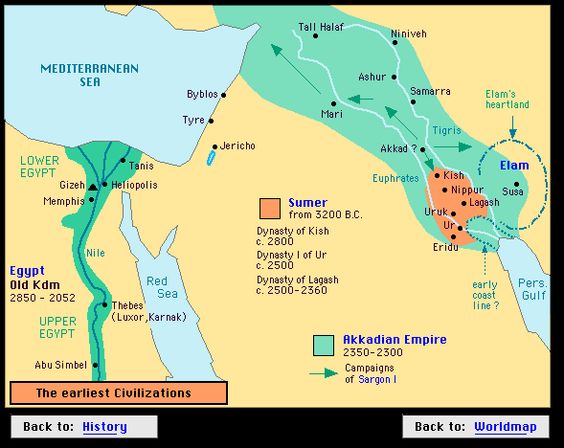
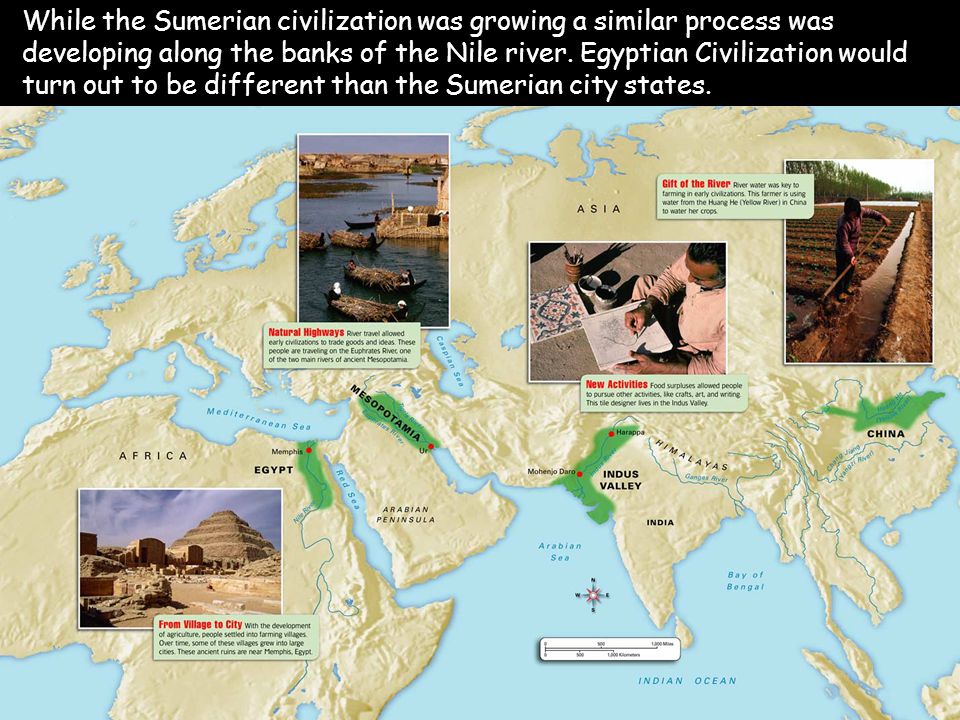
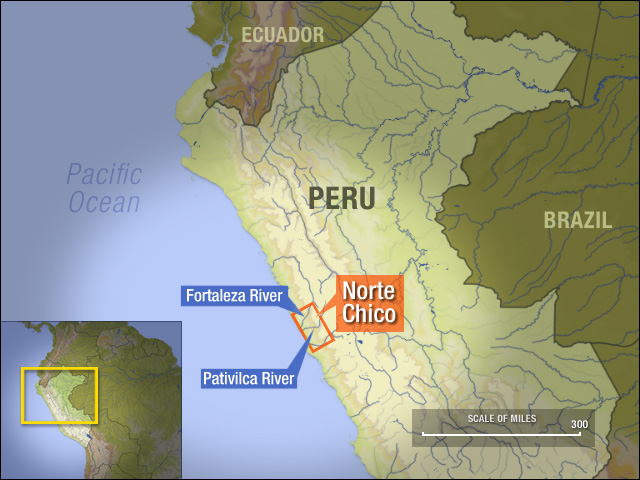

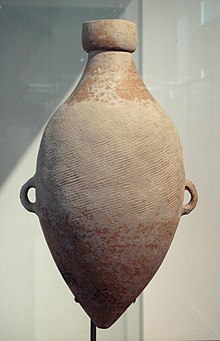
https://en.wikipedia.org/wiki/History_of_China#PrehistoryExcavation of a Peiligang culture site in Xinzheng county, Henan, found a community that flourished in 5,500 to 4,900 BC, with evidence of agriculture, constructed buildings, pottery, and burial of the dead.[16] With agriculture came increased population, the ability to store and redistribute crops, and the potential to support specialist craftsmen and administrators.[12] In late Neolithic times, the Yellow River valley began to establish itself as a center of Yangshao culture (5000 BC to 3000 BC), and the first villages were founded; the most archaeologically significant of these was found at Banpo, Xi'an.[17] Later, Yangshao culture was superseded by the Longshan culture, which was also centered on the Yellow River from about 3000 BC to 2000 BC.
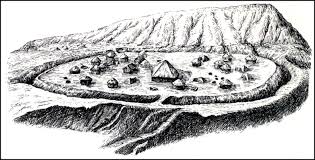

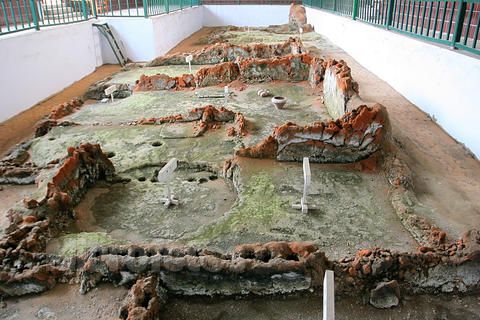
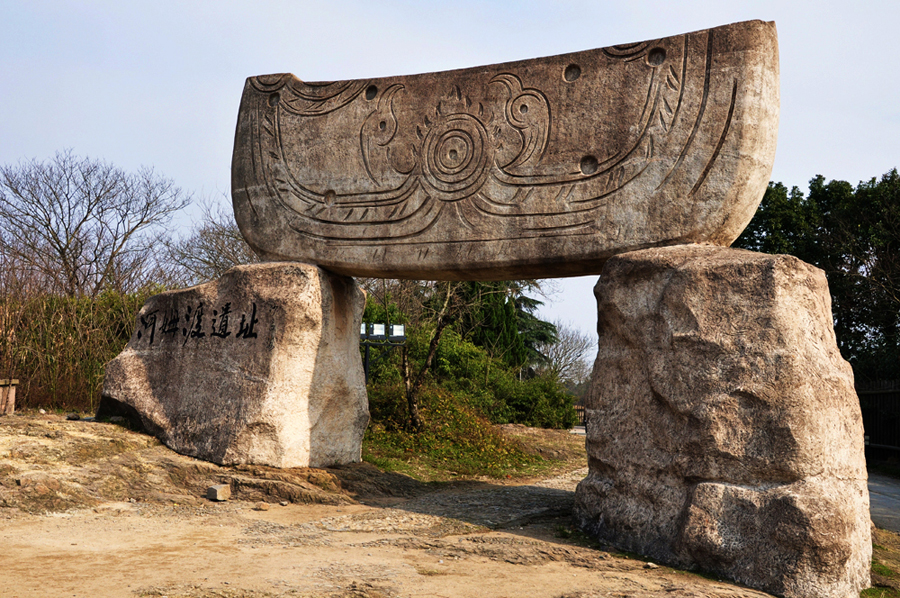
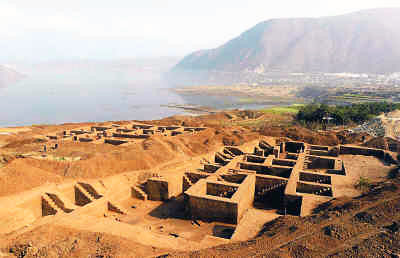
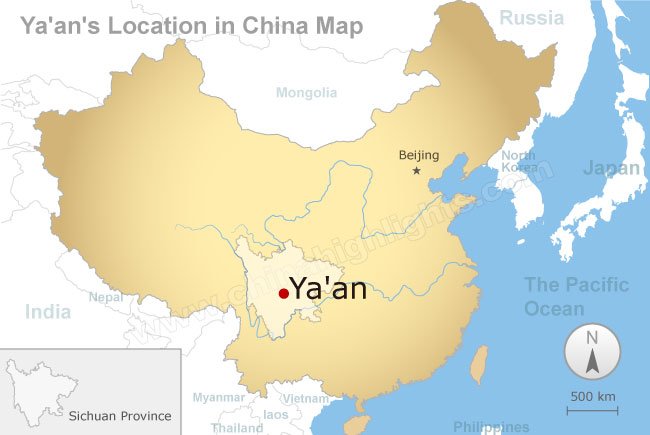
It is not correct to assume that the ancient people were ever compartmentalized. Even stones for Stonehenges, beads, stone for implements were carried over large distances, hundreds and thousands of miles.Take for example the word Raja, Ragnya, Rajanya, etc., they are close to Latin 'reg' that you mention here.If one looks at prehistory, there would have been a stage when the proto-languages were together in the northern Balkans: hence common roots in Celtic and Latin like reg "king" and the preservation of the a/o distinction in those groups (unlike Germanic, Slavonic, Anatolian, etc).
We know of the Hittites and the Mittani who interacted with the Sumerian and Egyptian people. The Indo-Aryan people interacted with indigenous Indians. The IE group was polythistic/Henotheistic/Kethenotheistic till Zoroaster's time who came up with monotheism.However, the question is whether or not the PIE people were in frequent communication with Semitic peoples, and simple geographic proximity is not enough to determine that.
The final issue at hand in this tangent of mine is whether the PIE people had some kind of equivalent to the modern Supreme Deity of monotheist religions; I don't really think such a thing can be determined to exist.

Can you please write more how we know or can suppose this?When did Aryans come to India? I am equally puzzled. Perhaps Indus/Saraswati Valley civilization was a joint effort by Aryans and indigenous Indians. They certainly were here in strength before 2,000 BC, when a tectonic upheaval caused the disappearance/dwindling of River Saraswati (exists even now as a small seasonal rivulet known as 'Sarsuti').
So Indra is not an Aryan God but a pre-Aryan Indian one?The rise of Vishnu is a very interesting episode in Hindu Mythology. Two Aryan Gods came up to fight the indigenous Gods and were both roundly defeated. Shiva destroyed Prajapati Daksha's sacrifice and Krishna vanquished Indra in Vrindavana by lifting Govardhan mountain. But Vishnu did not fight anyone. He came with his sweet smile and peaceful ways, and impersonated the indigenous Gods. Rama (Oh, that is me only), Krishna (Oh, that is me only), and won the battle without a war. I do not know if you are familar with the stories.
So Eupedia is proposing that the Indo-Europeans moved into the Indus Valley "by" 1700 BC with their horses. As you may know, the Indus Valley society lasted from 2500-1500 BC. One reason some claim it was not Indo-European is because they hardly find horses in the Indus art.
The Indo-Iranian migrations progressed further south across the Hindu Kush. By 1700 BCE, horse-riding pastoralists had penetrated into Balochistan (south-west Pakistan). The Indus valley succumbed circa 1500 BCE, and the northern and central parts of the Indian subcontinent were taken over by 500 BCE. Westward migrations led Old Indic Sanskrit speakers riding war chariots to Assyria, where they became the Mitanni rulers from circa 1500 BCE.
...
The highest frequency of R1a (about 65%) is reached in a cluster around Kyrgyzstan, Tajikistan and northern Afghanistan. In India and Pakistan, R1a ranges from 15 to 50% of the population, depending on the region, ethnic group and caste. R1a is generally stronger is the North-West of the subcontinent, and weakest in the Dravidian-speaking South (Tamil Nadu, Kerala, Karnataka, Andhra Pradesh) and from Bengal eastward. Over 70% of the Brahmins (highest caste in Hindusim) belong to R1a1, due to a founder effect.
Maternal lineages in South Asia are, however, overwhelmingly pre-Indo-European. For instance, India has over 75% of "native" mtDNA M and R lineages and 10% of East Asian lineages. In the residual 15% of haplogroups, approximately half are of Middle Eastern origin. Only about 7 or 8% could be of "Russian" (Pontic-Caspian steppe) origin, mostly in the form of haplogroup U2 and W (although the origin of U2 is still debated). European mtDNA lineages are much more common in Central Asia though, and even in Afghanistan and northern Pakistan. This suggests that the Indo-European invasion of India was conducted mostly by men through war, and the first major settlement of women was in northern Pakistan, western India (Punjab to Gujarat) and northern India (Uttar Pradesh), where haplogroups U2 and W are the most common.
http://cdn.eupedia.com/images/content/Haplogroup-R1a-Z93-Asia.png
Brahmins who term themselves as 'Saraswat' are scattered all over India. They are among the cream of brahmins and have always been respected for their knowledge of scriptures. The scattering is supposed to have begun around 2,000 BC, when the Indus/Saraswati region experienced the disappearance of Saraswati river and a change in climate. The region went dry. That is also the reason of the fall of Indus/Saraswati civilisation. There are literally, thousands of archaeological sites in this region. Sage Agastya is supposed to have been the first Aryan to cross the central Indian Vindhya mountains. https://en.wikipedia.org/wiki/Saraswat_BrahminCan you please write more how we know or can suppose this?
Indra was the chief God of the Indo-Aryans. But the indigenous people did not accept him. There are various mythological stories about the misdeeds of Indra and finally his worship was banned in India. Although he is still invoked in Aryan type fire-rituals - yajnas, but there are no temples for him. In the conflict with Krishna, Indra tried to inundate the people Vrindavana by rain as they would not worship him, but Krishna, an indigenous God, is supposed to have saved them by lifting a mountain, and that too on the tip of his small finger, convincing people (mythologically) of his greater power.So Indra is not an Aryan God but a pre-Aryan Indian one?
I don't know the story, but understand what you mean otherwise.
Also, couldn't we test the DNA of corpses at the Harappan sites to see what their DNA is and then see if their DNA matches the Indo-European peoples? R1b and R1a for example are common DNA among the Centum and Satum peoples respectively.
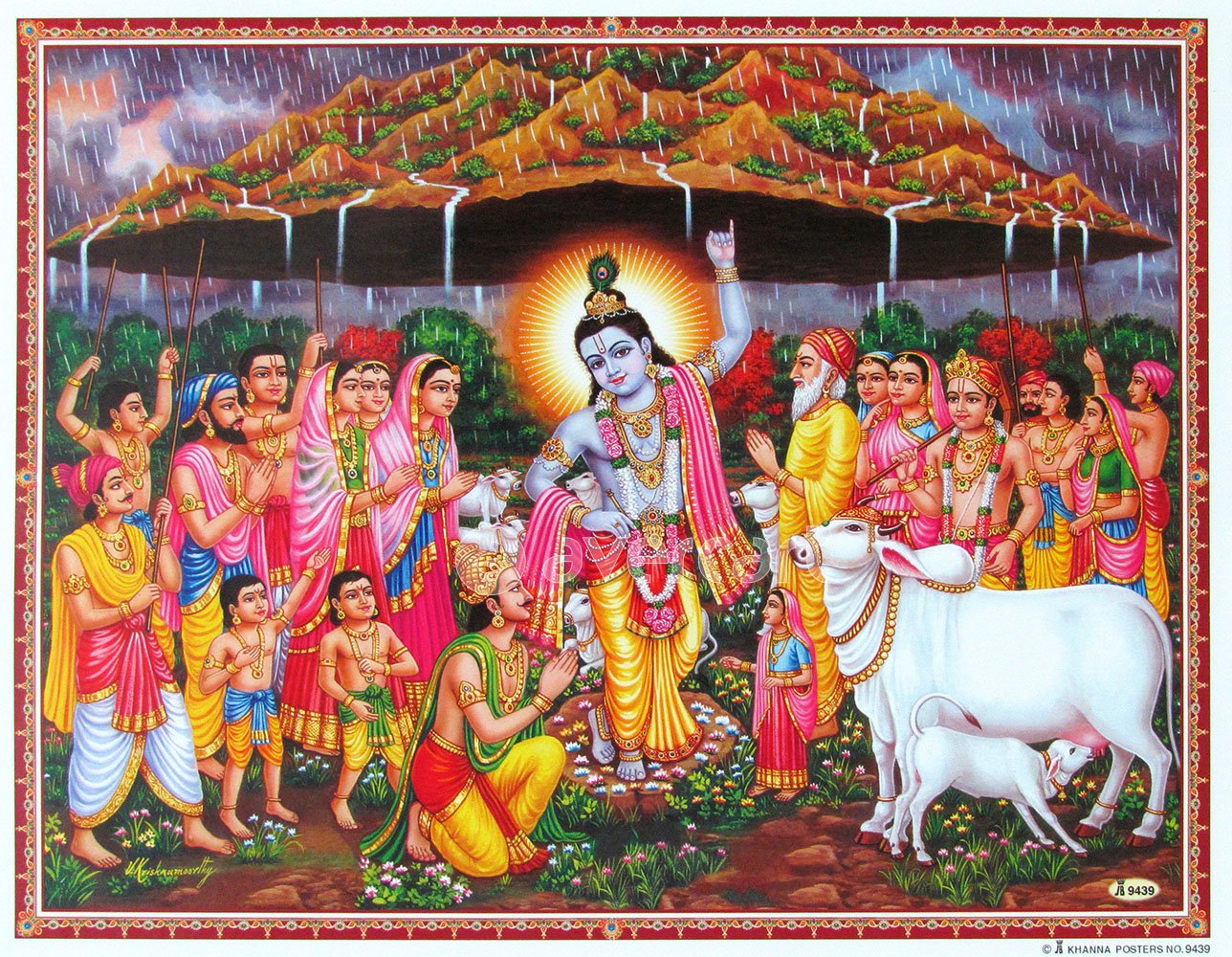
https://en.wikipedia.org/wiki/Peopling_of_India
https://en.wikipedia.org/wiki/Genetics_and_archaeogenetics_of_South_Asia
https://en.wikipedia.org/wiki/Indo-Aryan_migration_theory
https://www.google.co.in/webhp?sourceid=chrome-instant&rlz=1C1LENP_enIN576IN576&ion=1&espv=2&ie=UTF-8#q=peopling of india insights from genetics


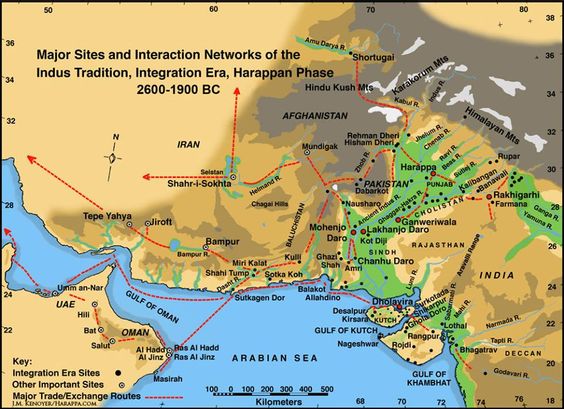
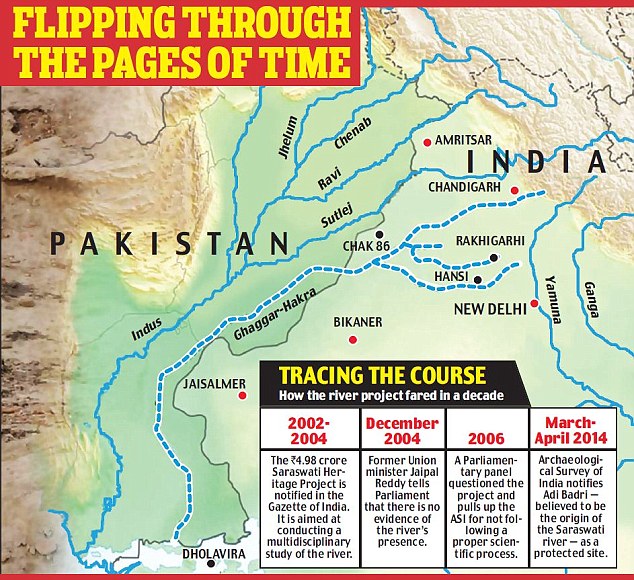
What I have seen some do is propose an idea of Harappan DNA based on modern Pakistani DNA. But I think if they tested Indus corpses it would be alot better.I got this at Google Search for "Harappa DNA": https://www.google.co.in/webhp?sourceid=chrome-instant&ion=1&espv=2&ie=UTF-8#q=harappa+DNA
Got this from Google Image Search for "Harappa DNA": https://www.google.co.in/search?q=h...aDjDtiM:;EkZPem-XRSp2gM:&imgrc=IirCCAKaDjDtiM:
I do not know what the image given below means. I have yet to get the head and tail of the whole thing.

www.philipcoppens.com/caral.htmlThe invention of cotton fishing nets, the cotton grown in the Supe valley, must have greatly facilitated the fishing industry. It is believed that this excess of food might have resulted in trade with the religious centres. But apart from an economic model of exchange, the new social model also meant that a labour force existed that had in essence little to do. This labour force could thus be used for “religious purposes”. Caral might have been the natural result of this process – just like the pyramids of Egypt seem to have been the result of an available workforce.
The discovery of Caral has therefore reintroduced a powerful enigma: at the same time, on two different continents, agricultural advancements created a new style of life. The available workforce that agriculture had created was reemployed in the construction of pyramids. This “template” is visible in Peru, Sumer and Egypt, all in the 3rd millennium BC. Coincidence, or evidence of design? Alternative researchers will certainly soon reopen this debate, but archaeologists steer well clear of it.

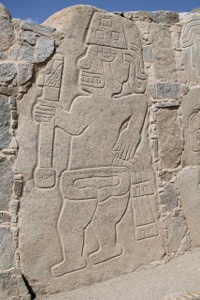
http://xavianthaze.blogspot.com/2013/07/the-lost-pyramids-of-peru.htmlCaral also exhibits archaeologic similarities with ruins found in Ancient turkey. Even examples of Cyclopean Greek architecture show up in Caral. Some of the ruins even look like they could be sitting in a desolate desert in Egypt.
The amphitheater looks exactly like something we can see in ancient Greece. The Caral pyramid complex in Peru is staggering and ancient. The late Phil Coppens writes:
- The site is in fact so old that it predates the ceramic period, the reason why no pottery was found. Its importance resides in its domestication of plants, especially cotton, but also beans, squashes and guava.
